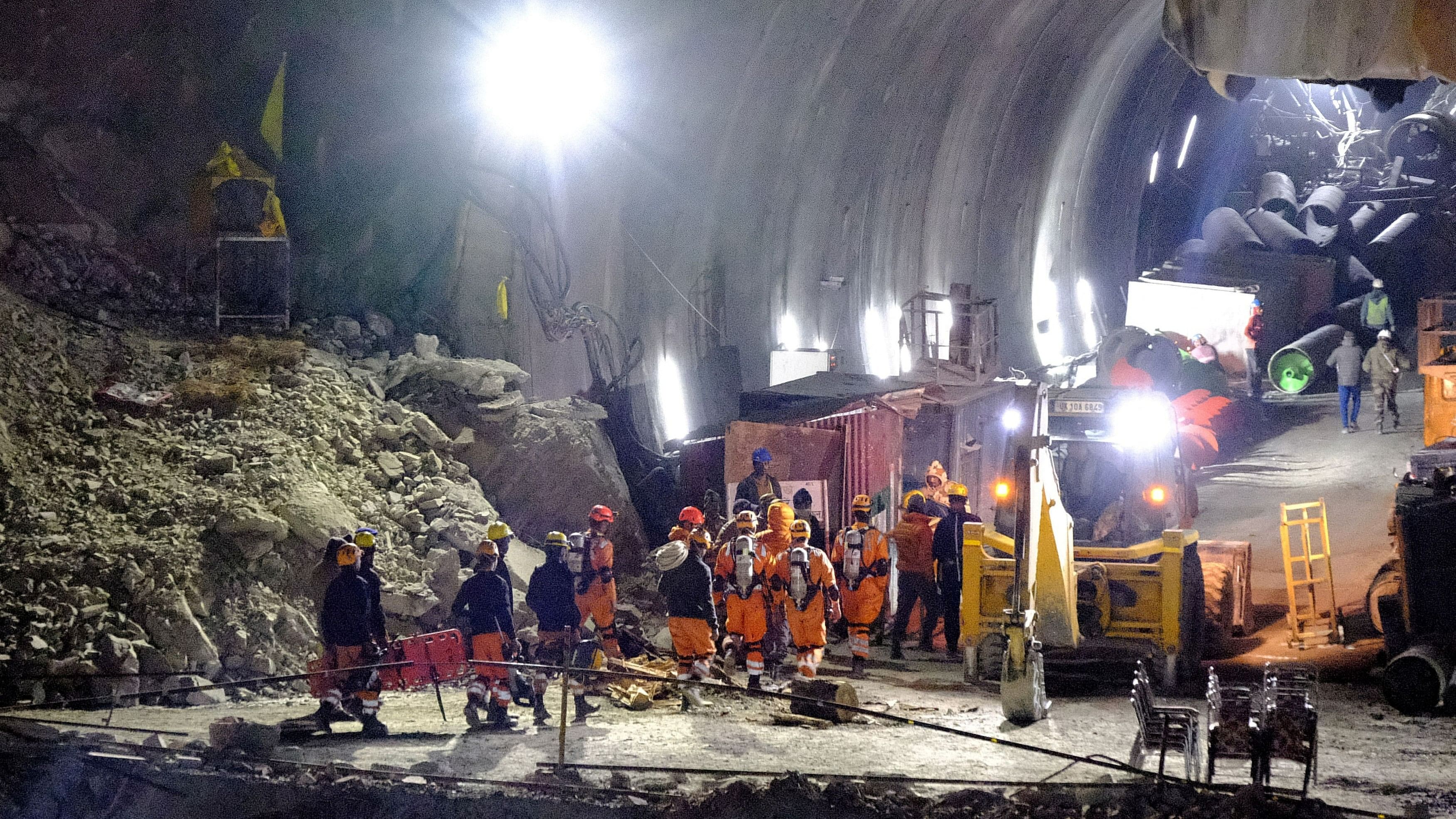
Members of the National Disaster Response Force enter the tunnel where workers have been trapped for ten days after it collapsed, in Uttarkashi in Uttarakhand.
Credit: Reuters Photo
It has been 12 days since 41 workers have been trapped in the Silkyara tunnel in Uttarkashi. As rescue efforts are going on to free the workers from the tunnel, National Disaster Management Authority (NDMA) member Lt General (retd) Syed Ata Hasnain, in an interview with DH's Anupama Ramakrishnan, threw light on the ongoing rescue efforts and the challenges lying before the rescue team.
How do you assess the situation at Silkyara tunnel?
As of 8 am on November 24, I would say we have a good chance of success in the very near future. The auger could recommence boring in the afternoon today after necessary measures have been taken to remove the obstacles which came up last night.
There is a fair chance that there may be fewer encumbrances hereafter as the collapsed debris does not pose major obstacles as per ground penetrating radar. Yet, technology is only an enabler and the proof lies in the final success.
Could you elaborate on the kind of rescue operations that are going on?
There are five approaches being attempted. The most reliable and fastest is the one from the direction of the Silkyara opening where the debris collapse has taken place 200 metres inside. NHIDCL is boring a passage through the debris with an augur and placing six-metre long steel pipes of 900 mm bore in the form of a pipeline. It is a tricky, painstaking and laborious process but the quickest option under the circumstances. The debris has an unpredictable composition of steel girders, concrete blocks and rock through which physical cutting has to take place.
How would you describe the situation of the trapped workers?
Right from the beginning, we had a lifeline to them through a compressor pipe which did not collapse and the power line in a conduit continued to be operational. Limited survival ration, water and even medicines and vitamin tablets could be sent through the four-inch pipeline. The workers are not in a cramped space, they have a two-km-long tunnel space behind them. A new six-inch pipeline for food, water, and air, in addition to a telephone line, was constructed on November 21. As such the overall likelihood of the rescue of the workers is high. They are even receiving psycho-social counselling through experts through the lifeline.
What are the challenges being faced by the rescue team?
The challenges in the main operation described above are the composition of the debris, and often, the unrealistic expectation that the operation is nearing successful completion in a few hours. This puts a lot of pressure on the workforce, as well as the relatives of the trapped workers who believe rumours. The central government has arranged for daily briefs, where the authentic and realistic picture is presented.
Why do you think such a situation arose and what needs to be done to avoid such a crisis in future?
It is too early to state anything about the reasons for the tunnel collapse. At present, we are focused on the evacuation of the 41 frontline workers who are dear to us. The governments at the Centre and State will in due course endeavour to investigate the incident, as they do with any other disaster.
